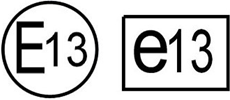Certification standards in Europe
The European Green Deal
If you trade in Europe, you need to be aware of the European Green Deal, which…
An overview of EU sustainability requirements
There are EU directives that affect the sale of specific products – for example under the Waste Electrical and Electronic Equipment (WEEE) Directive, batteries require a crossed out wheelie-bin symbol to direct them to recycling. The CE Mark is probably the most widely used and recognised product mark in the EU. It indicates a product meets all essential requirements (safety, health, energy efficiency or environmental concerns) of applicable EU legislation.
The EU has a requirement for the circular design of some products. For example, some products are required to be designed for a minimum warranty period and/or disassembly. There are ‘extended producer responsibilities’ (EPR) for the end-of-life phase of some products. Retailers are required to incorporate the cost of waste recovery and reuse, remanufacture, or recycle of EPR products into their business model.
o support the EU’s move towards a toxic-free environment, chemicals may be grouped into categories, and restrictions applied. Some certifications specify labels include information on recycled content and material of manufacture.
European sustainability standards and eco-labels
Some of the more common European standards, certifications and eco-labels include:

Blue Angel – Voluntary eco label for products
Keeping up with European directives and policies
The certification and labelling of exports to the European market is an evolving area. You will need to research this and keep up to date if you are trading in Europe.
- See a full list of European Union directives
- Browse Summaries of EU Legislation for short explanations of the main legal acts passed by the EU
Green credentials & standards










